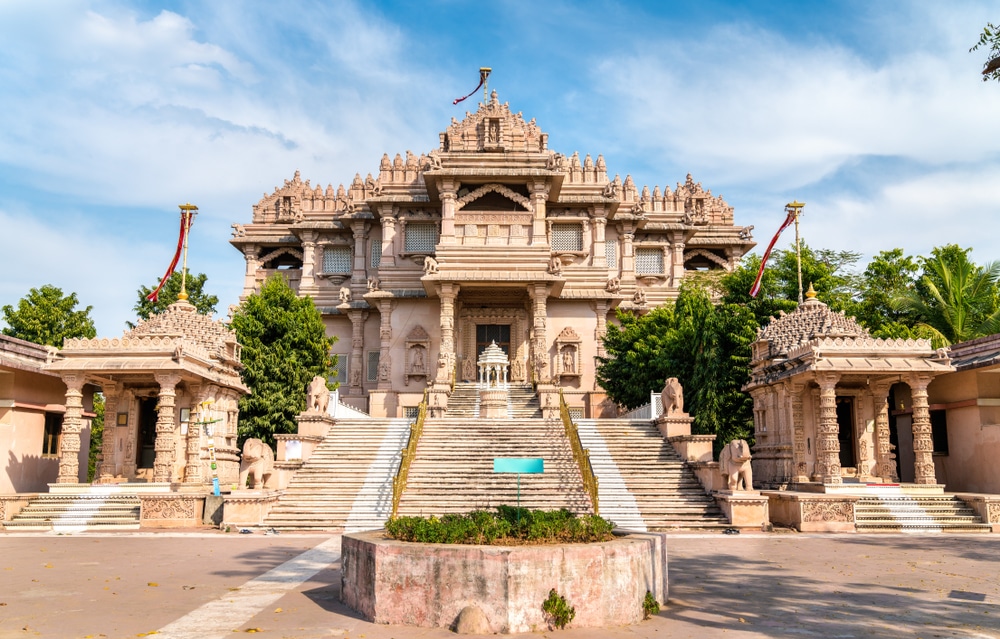A state in India, Gujarat and its forest department, has taken significant strides in the battle against climate change by inking 3 crucial Memorandums of Understanding (MoUs) worth Rs 2,217 crore or over US$266 million of carbon credits from planting mangroves. Deals have also been signed in the area of carbon credit through agroforestry.
The initiative, which is the first-of-its-kind in the country, is part of the upcoming 10th Vibrant Gujarat Global Summit. It’s a pioneering effort in India’s fight against the adversities of climate change.
Exploring Ways to Sequester Carbon
India had revealed its new climate change commitments to reduce emissions intensity of its GDP by 45% by 2030 from 2005 levels.
The country’s holistic approach to climate involves several things. Alongside the mangrove plantation deals, the forest department has also entered into agreements in agroforestry.
It showcases the state’s commitment to exploring different methods for carbon sequestration. This highlights the importance of promoting sustainable land use practices in the region.
In 2022, the world’s 3rd-largest emitter captured the carbon market spotlight with several climate action plans proposed. The country first planned to begin carbon trading for the heavy emitting sector, including energy, steel and cement. This is all part of India’s goal to hasten transition to cleaner energy and reach its 2070 net zero emissions.
In a parallel endeavour, beyond the MoUs, the Gujarat government is actively investigating carbon sequestration in wetlands. A study found that wetlands can store 81-216 metric tons of carbon per acre, depending on their type and location.
The Gujarat Ecological Education and Research (GEER) Foundation, an autonomous body affiliated with the forest department, is conducting a comprehensive carbon study at 4 Ramsar sites in the state: Nal Sarovar, Thol, Khijdia and Vadwana.
Ramsar sites refer to sites listed on the List of Wetlands of International Importance. India boasts a total of 75 Ramsar Sites, which altogether span an expansive 13,26,677 hectares.
Racing Towards Net Zero
Another remarkable event on the horizon is a dedicated conclave scheduled from January 10 to 12, focusing specifically on Dholera. It is a burgeoning greenfield smart city with a footprint of 920 square kilometers, 100 kms away from Ahmedabad city.
Dholera is the biggest of the 8th industrial greenfield cities under development in the 1st phase of the 100 billion-dollar project. The gathering aims to spotlight Dholera’s potential as a hub for smart businesses illustrated below.
Smart cities are now becoming a trend for countries to green the urban areas and businesses. In 2022, Saudi Arabia revealed its The Line, a zero-carbon city in NEOM. It’s 200 meters wide, but 170 kilometers long, and 500 meters above sea level.
The Gujarat Global Summit also includes a pivotal seminar entitled “Towards Net Zero” on January 12. The event aims to bring global and national leaders to discuss India’s pledge to fight climate change.
Principal Secretary (Forest and Environment) Sanjeev Kumar further noted that the aim of the seminar is for the participants to “share their views on net zero, decarbonization of the economy and carbon trading.”
Carbon credits, despite experiencing historic lows in terms of prices last year, are seen to play a crucial role in reducing harmful emissions. Not only India but also many other nations are strengthening their carbon credit markets to promote transparency and integrity.
African countries also find carbon credits a crucial tool in drawing in funding from rich nations. Several countries in the region have announced their major carbon credit deals and market schemes last year.
The strategic initiatives by the Gujarat government in carbon credits underscore its unwavering commitment to sustainable growth and development. The collective efforts align seamlessly with India’s overarching goals to mitigate climate change and propel economic progress in a sustainable direction.


